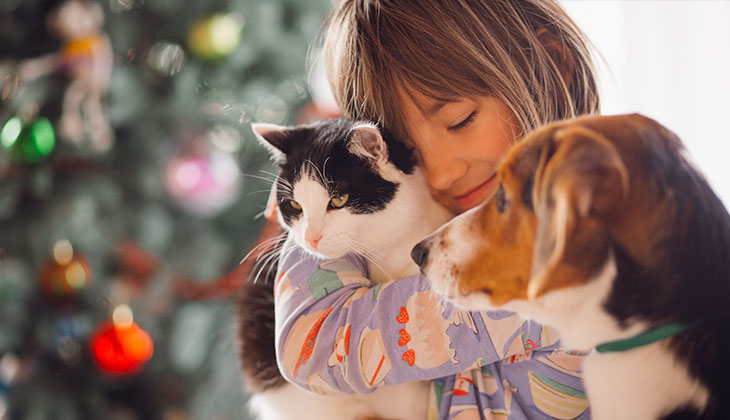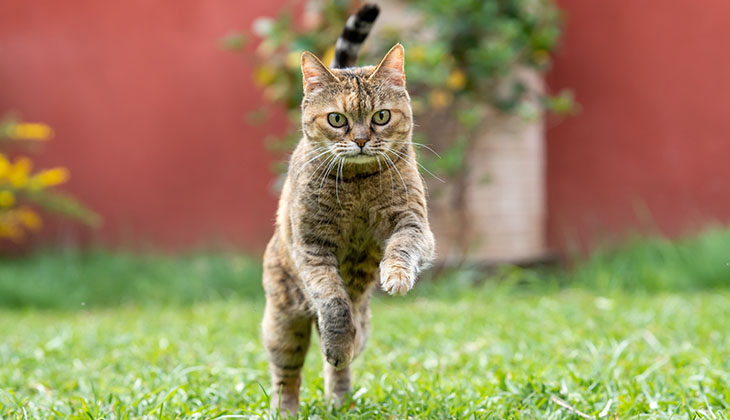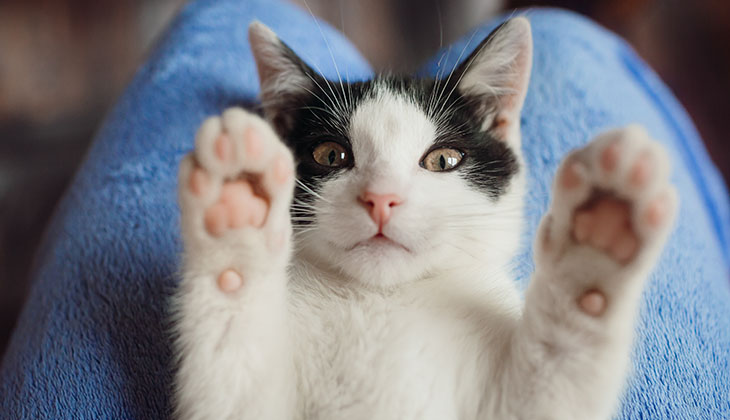Want To Know More About Your Kitty?
Cat parents know that their little fur-ball is a wonderful friend, even though, traditionally, they have often been viewed as aloof and somewhat mysterious. However, there may be some interesting and even surprising facts about kitties that you might not know, so… read on and you may learn a few things which might help you to understand your furry friend a bit better.

Let’s first go back in time …
The ancient Egyptians believed that cats were gods and so they worshipped them, In the Middle Ages in Europe, people believed that cats were the companions of witches and condemned them.
Let’s look at some facts …

- It’s in the Genes.
Your kitty shares 95% of its genes with tigers. They have also retained certain behaviours of cats in the wild, including pouncing, stalking of prey and scent and urine marking.
Your Cat’s Senses:
- Sense of Taste
It is believed that cats are the only mammals who can’t taste sweet things.
- Sense of Smell
Cats have a dual scent function that’s quite rare in the animal kingdom. They have regular olfactory (scent) receptors to pick up the aromas in the air like other animals. But cats also have a second “nose” located in the roof of the mouth, called the vomeronasal organ – that’s why they sometimes open their mouths when smelling.
- Sense of Hearing
You may already know that cats have exceptional hearing. Their cone-shaped ears amplify sound and they can rotate those ears 180 degrees so that they can pinpoint the source of a sound.
- Noses Like Fingerprints
No two cats have the same nose, like fingerprints in humans. Each nose is unique to its owner, with its own pattern of ridges and bumps.
- The Cat’s Meow!
You might have assumed that when your kitty meows, he or she is ‘talking’ to other cats. In fact, a cat’s meow is an attempt to communicate with you. When kitty meows at you, it usually means that he/she wants to get your attention. They actually have a different meow for each human they encounter.
- Purring as Therapy
A cat’s purr vibrates at a frequency of 25 – 150 hertz – the same frequency at which their bones and muscles repair themselves. Some experts have suggested that purring actually helps cats to heal themselves from injuries.
Purring does not always mean that kitty is happy. If they are in pain or stressed, it helps them to self-soothe when they are distressed.

- The Look of Love!
According to experts, cats express love with their eyes, by blinking slowly. If you are lucky enough to see this, you can respond with a long, calming gaze.
- Grooming
Grooming helps your furry friend maintain healthy skin and hair, regulate their temperature, remove loose hair and dirt and increase their blood circulation. They groom for around 1/3 of the time they’re awake.
- Marking Their Territory
When you find your kitty rubbing their body and face up against you, it means that they are marking you as their territory.
- Sleepy Kitty
You will, of course, have noticed that your fur-ball seems to spend an awful lot of his/her time sleeping. This is absolutely true! Kitty spends around 70% of his/her time snoozing. In fact, they sleep for about 13 – 16 hours per day.
- Camel Walking
Watch your cat walking. You will notice that they put both right feet first and then both left feet, causing half of their bodies to move forward at one time. The only other animals who walk like this are camels and giraffes!
- Climbing Down
You may also have noticed that kitties back downwards when they have climbed up an object. In fact, they are unable to climb down head-first. This is because their claws all curve downwards.
- Super-Charged Kitty!
We’ve all seen our kitties charge around the house, so we realise that they can move fast, but believe it or not, your furball can run up to 48 kilometres per hour! In fact, cats can run up to 50 kilometres per hour.
- Cats as Therapy
Cat (and dog) owners have been found to feel calmer than those who do not have pets. Several studies have shown the beneficial effects of animals on their human parents. In fact, experts say that petting a cat or a dog can help with stress. This also helps us to be more caring and sensitive and may actually be good for our physical health too.
- Kitty Years
Experts say that by the time your kitty is one-year-old, his/her age is equivalent to a 15 -17-year old human teenager. After one-year-old, kitty then ages by around 5 – 6 years per calendar year. For example, an 11 – 14-year old cat has an age of about 60 – 72 human years and is a senior.
We hope that you have learnt some new facts about your cat. It seems obvious that there are many very good reasons why cats have been worshipped and loved throughout the ages and have been the subject of so many myths.
ZA-NON-230800004

Subscribe to our Newsletter
Get to know your furry friend better! Sign up for all things dog- or cat-related.
The Hairy Facts about the dreaded hairball
12 April 2021
Help! My dog’s barking mad! Volume 2
12 April 2021
Your Itchy, Scratchy Cat – All About Cat Skin Problems
12 April 2021
The Dog’s Diet: A Bone of contention?
01 April 2021
Mango Fly Worms: How to Spot and Eliminate them
Posted on November 28,2019
Managing Mange And Mites In Your Dog
Posted on June 11,2018
Why Do Cats Purr and How? Learn What Your Cat Is Saying
Posted on October 14,2020
How to Get Rid of Ear Mites in Dogs
Posted on November 06,2019









